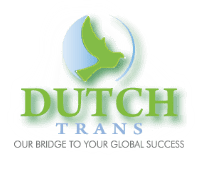
Step-by-Step Guide in Checking the Quality of Translation
29 Dec Step-by-Step Guide in Checking the Quality of Translation
The quality of translation is highly dependent on the end user, content type, and business goals. Some technical documents would require very precise translations, including precise translations of terminologies. Global campaigns don’t require such precise translations. Rather, it needs to convey a strong emotion or needs to send out a strong message.
A quality translation would really depend on the content that needs a translation.
Talking to your translation company would be a crucial step in order to obtain a quality translation.

How to check the quality of translation

To check the quality of a translation, it’s essential to consider several factors that professional translation services and agencies emphasize. First, ensure that the initial translation is done by human translators who are proficient in both the source language and the target language, as this minimizes grammar mistakes and punctuation errors.
A reputable professional translation agency will have a rigorous quality standard and a thorough localization process to ensure that translations are not only accurate but also culturally appropriate. Check the translation company’s track record and reviews within the translation industry to gauge their reliability. Additionally, verify that the translation partner provides timely turnaround times without compromising accuracy.
A quality translation will exhibit a seamless flow in the target language, demonstrating a deep understanding of the language pair and eliminating any language barriers. By selecting a professional translation agency committed to these principles, you can ensure that your translation meets the highest standards of accuracy and professionalism.
A high-quality translation is a key to achieving your business goals. This would help you preserve a consistent brand image and also allow you to communicate your message with the local audience.
On another note, a bad translation might do more harm than good, and examples are all around the internet. We have pointed out some of them in this article about translation mistakes. Just make sure you follow the steps outlined below to ensure the quality of translation is good enough in order to avoid embarrassment or financial loss.
- Gather previous quality translations that you prefer – those that are in line with your expectations. Also, include some examples that you don’t approve. This would serve as your provider’s guide to visualizing your expectations better.
- Encourage your translator to try to understand and adapt the working relationships.
- Check that an in-country reviewer can understand the style guidelines of translation.
- Provide appropriate guidelines. This allows both the translators and the reviewers to get a better understanding of your brand.
- Give your LSP access to the staging server.
- Supply your LSP with quality content as a source.
- Allow the translators and all in-country reviewers to have enough time to finish the translation and evaluation.
- Regularly communicate with the LSP’s project manager.
- Create a harmonious long-term relationship with the translators. Established relationship makes them more familiar with your business and thus, a higher quality translation.
- Have a person to answer your LSP’s questions.
As you can see, the quality of translation largely depends on what and how you communicate with your translation provider and your expectations. So make sure proper communication is established and your requirements are received and followed properly.
Importance of Translation Checking
Translation checking is crucial in ensuring the accuracy, quality, and reliability of translated content, particularly in a world where clear communication across languages is increasingly vital. This process involves a detailed review by competent translators who verify that the translation is not only linguistically accurate but also culturally appropriate and contextually correct.
In regions with diverse languages, such as Sub-Saharan Africa or multilingual countries like South Africa, translation checking helps bridge language barriers, ensuring that the intended message is conveyed effectively.
This step is essential in various fields, from legal and medical document translation to software localization and educational materials. The quality control provided by translation checking helps prevent misunderstandings and errors that could arise from direct translations, thereby maintaining the integrity and professionalism of the content.
Moreover, in industries requiring high standards of accuracy, such as international business, legal proceedings, and academic research, thorough translation checking safeguards against potential miscommunications and legal liabilities. Thus, translation checking not only enhances the quality of the final product but also fosters trust and confidence among target audiences, ensuring effective and meaningful communication across linguistic boundaries.
Translation checking is an essential step in the translation process, particularly when aiming for accurate and high-quality translations. Professional translators, supported by CAT tools and translation memories, work diligently to ensure linguistic accuracy and cultural appropriateness.
However, inconsistencies or errors may still occur due to the complexity of languages and nuances in context. Translation checking involves a thorough review of the translated content by experienced linguists or translation quality assurance professionals. This additional step aims to identify and rectify any quality issues, such as poor translations, inconsistencies, or linguistic inaccuracies, before final delivery.
By conducting a comprehensive review, translation service providers can uphold high standards of quality and meet the expectations of the translation buyer, whether it’s for legal documents, marketing materials, or technical manuals. With manual review and linguistic quality assurance tools like visual testing, translation checking enhances translation accuracy and ensures that the final product aligns with the intended message and target audience.
Factors to Consider in Translation Checking
In the translation checking process, several factors must be considered to ensure the accuracy and quality of the translated content. Human linguists play a crucial role in this process, utilizing their linguistic expertise to evaluate the translation’s accuracy and cultural appropriateness. The Translation Bureau or Directorate General for Translation often oversees this process, ensuring that high standards are maintained.
When reviewing machine-translated content, the accuracy of machine translation is carefully scrutinized, with attention to potential errors or discrepancies. Equivalence of meaning is essential, considering nuances of meaning and target-culture-specific issues to ensure that the translated content effectively conveys the essential meaning of the source text.
Linguistic testing, such as interview and survey studies, may be conducted to assess the translation’s effectiveness and appropriateness. Additionally, factors such as file format and language version are taken into account to ensure that the translation is delivered in a natural and accessible format. By considering these factors comprehensively, the review process aims to uphold the highest standards of quality and accuracy in translated content.
High-quality translation standards
High-quality translation standards are essential for ensuring accuracy, consistency, and clarity in translated content. These standards encompass various aspects of the translation process, from linguistic accuracy to cultural appropriateness and technical proficiency. Professional translators adhere to established guidelines and best practices, utilizing their linguistic expertise and cultural knowledge to produce translations that faithfully convey the meaning and intent of the source text.
Additionally, rigorous quality assurance measures, such as thorough review processes and the use of translation memory tools, help maintain consistency and precision across translations. High-quality translation standards also prioritize effective communication with clients, ensuring that their specific requirements and expectations are met. By upholding these standards, translation service providers can deliver reliable and impactful translations that resonate with target audiences and meet the highest levels of excellence.
Types of Translation Checking Methods
Types of translation checking methods related to human translation encompass several approaches aimed at ensuring the accuracy and quality of translated content. Peer review is a common method, where another translator or linguist reviews the translation for errors, inconsistencies, and cultural nuances. Back-translation involves translating the content back into the original language by a different translator to check for discrepancies and ensure the original meaning is preserved.
Bilingual review, where a reviewer proficient in both languages checks the translation against the source text, helps identify subtle errors and improve overall quality.
Additionally, style and quality checks by editors who focus on grammar, punctuation, and adherence to specific style guides ensure the translation is not only accurate but also well-written and appropriate for the target audience. These methods, combined, form a comprehensive approach to maintaining high standards in human translation.
Translation checking is a crucial step in the translation process, aimed at ensuring accuracy, consistency, and quality in the translated content. Several methods are employed to review translations, each with its own strengths and limitations.
One of the most common methods of translation checking is human review, where professional linguists meticulously examine the translated content for linguistic accuracy, cultural appropriateness, and adherence to the source text. Human linguists possess the expertise and language proficiency necessary to identify errors, inconsistencies, or nuances in meaning, ensuring that the translated content effectively communicates the intended message to the target audience.
Another method of translation checking involves the use of translation memory tools, which store previously translated segments and suggest matches for new content. Translation memory tools not only facilitate consistency across translations but also expedite the review process by automatically identifying repetitions and inconsistencies.
Linguistic testing is another valuable method of translation checking, involving the assessment of translated content through interviews, surveys, or focus groups with native speakers. Linguistic testing provides valuable feedback on the clarity, readability, and cultural appropriateness of the translated text, helping to refine and improve the quality of the translation.
Additionally, machine translation quality estimation methods leverage artificial intelligence and natural language processing algorithms to assess the accuracy and fluency of machine-translated content. While machine translation quality estimation can expedite the review process, it is essential to supplement it with human review to ensure the highest levels of accuracy and quality.
Furthermore, visual testing methods involve the examination of the layout, formatting, and presentation of translated content to ensure consistency and readability across different platforms and devices. Visual testing ensures that the translated content is visually appealing and accessible to the target audience, enhancing the overall user experience.
Final translation checking
Final translation checking is a crucial step in the translation process, serving as a quality assurance measure to ensure accuracy, consistency, and linguistic appropriateness in translated content.
First and foremost, final translation checking plays a pivotal role in upholding the quality and integrity of translated materials. Professional translators, supported by linguistic expertise and cultural knowledge, strive to produce accurate and contextually appropriate translations.
However, errors or inconsistencies may still occur during the translation process due to the complexity of languages and nuances in context. Final translation checking provides an opportunity to identify and rectify any such issues, ensuring that the translated content meets the highest standards of quality and reliability.
The process of final translation checking typically involves several key steps. Firstly, the translated content is thoroughly reviewed by experienced linguists or translation quality assurance professionals. This review encompasses a detailed examination of the translation for linguistic accuracy, cultural appropriateness, and adherence to client specifications. Any errors, inconsistencies, or mistranslations are identified and addressed during this stage. Additionally, the layout, formatting, and visual elements of the translated materials are evaluated to ensure readability and accessibility.
Furthermore, final translation checking may involve linguistic testing to assess the comprehension and effectiveness of the translation among the target audience. This may include conducting interviews, surveys, or focus groups to gather feedback on the translated content. Such testing provides valuable insights into the clarity, relevance, and cultural resonance of the translation, helping to further refine and improve its quality.
Moreover, the use of translation memory tools and software-based checks can aid in final translation checking by identifying repetitive phrases, terminology discrepancies, and formatting issues across translation projects. These tools help ensure consistency and accuracy in the translated content, particularly in large-scale or ongoing translation projects.
Final translation checking is an indispensable stage in the translation process, essential for ensuring the accuracy, consistency, and quality of translated materials. By meticulously reviewing the translated content, addressing any errors or inconsistencies, and incorporating feedback from linguistic testing, translation service providers can deliver reliable and impactful translations that resonate with target audiences and meet the highest standards of excellence.

